|
Last year I published a book chapter synthesizing an evolutionary perspective on tattooing for our Evolution Education in the American South volume and concluded by wondering whether athletes, specifically football players, get tattoos more than the average person (Lynn & Medeiros 2017). Earlier research by Koziel and colleagues (2010) indicated that tattooing (but not piercing) is positively associated with bilateral symmetry—meaning more fit people may be getting tattooed to show off their fitness. In between these two papers, my colleagues and I found that tattooing may prime the immune system (Lynn et al. 2016). The idea was that the body gets used to tattooing, like it gets used to exercise or an inoculation effect, and that the immunosuppressant effects of stress (and cortisol) become lessened with time somehow, so the body does not become susceptible to infection every time it undergoes purposeful moderate stress. ![Does this guy really need tattoos to show off how fit he is? (Photo by Taco Fleur [CC0])](http://evostudies.org/wp-content/uploads/2018/04/03DE97FB-617A-4057-AE0B-B34DAFDE0B33-167x300.jpeg) Does this guy really need tattoos to show off how fit he is? (Photo by Taco Fleur [CC0]) Does this guy really need tattoos to show off how fit he is? (Photo by Taco Fleur [CC0])
In our book chapter, we pondered whether elite athletes would be more heavily tattooed to draw attention to their fitness or if they are merely over represented in the media (the media love to show us athlete ink). After all, why would an elite athlete need to do anything additional to look better? They are already clearly fit as elite athletes. But why not test it to be sure? So we rolled out a simple prevalence survey, following Mayers et al. (2002) and Mayers and Chiffriller (2008), using Facebook, email, etc. and collected over 600 usable responses from undergrads nationwide. Our proxy for “elite†athletes was to target varsity. We’re at the University of Alabama, which has a huge varsity program, and of course the winningest football program is the modern era. I only mention that because the tattoos of the football players sometimes get as much press as they do on their own. Current Seattle Seahawk Jesse Williams is a Pacific Islander was in the press for his tats all the time. They weren’t Pacific Island style, but still it was a spectacle, especially when he got “YOLO†on the side of his face. I used to see him in the grocery all the time and embarrass him by approaching him “for research.†A.J. McCarron, who I think was just picked up by the Buffalo Bills from the Bengals, had a garnish mess of Jesus and crosses on his chest. And Reuben Foster (now with the 49ers) thought he was going to Auburn and had their logo tattooed on his shoulder throughout his high profile tenure at Bama.  Pacific Islander Jesse Williams was a spectacle while at Alabama for his tattoos (Photo: Mike Morris, CC By-SA 2.0) Pacific Islander Jesse Williams was a spectacle while at Alabama for his tattoos (Photo: Mike Morris, CC By-SA 2.0)
However, at first we found almost nothing useful. Getting varsity athletes to participate in the survey turned out to be really difficult. Of the 600 usable responses, only about 40 are varsity athletes, and there is no statistical differences in tattooing rates between varsity athletes and anyone else. The only thing that predicts tattooing is BMI, which is interesting—higher BMI is associated with being tatted. With piercing, the only predictor is gender. Females are more likely to get pierced—period. So it would seem like a wash until we examine tattoo- and piercing-related complications. Mind you, the rates of tattoo-related complications is really low. Tattoos are simply not that dangers to get. By contrast, the factor most predictive of getting a piercing-related complication is being pierced. Piercing is more risky than tattooing. The only factor predictive of tattooing-related complications is, again, BMI. Take home: Larger BMI is predictive of more tattooing, but it’s also predictive of more tattoo-related complications. What’s that mean? People may enhance or emphasize their phenotypes with tattoos, but there’s an ultimate costliness if one’s health is poor (i.e., maybe they are overweight?). You can’t cover up poor health with a tattoo—you’re more likely to draw additional attention to it, like the peacock whose tail feathers are TOO big.  Poor Gertrude McFuzz crossed the tail feather rubicon that garnered her attention until it and she became a burden. (http://seuss.wikia.com/wiki/File:Gertrude014.jpg) Poor Gertrude McFuzz crossed the tail feather rubicon that garnered her attention until it and she became a burden. (http://seuss.wikia.com/wiki/File:Gertrude014.jpg)
To retest this model, we surveyed all 30,000 undergrads at the University of Alabama and got over 6000 responses! But I will save those juicy insights for next time. They are even more cool, I promise you!
0 Comments
American Airlines stranded me in the Dallas-Ft. Worth airport overnight and I just made it to the conference in time for the 2nd half of the poster session. I presented wearing the same clothes I'd been wearing for two days and that I'd "slept" in after feeling like a pigeon at the airport. They know people are going to have to try to sleep there--why do they put those armrests to make it impossible. We won't poop on the floor. Anyway, it was an awesome conference, and I got a lot of good business done.
Congratulations to Jennifer Fourroux, Kira Yancey, and Kat Beidler for their award at the Undergraduate Research and Creative Activity Conference for their presentation "Caregivers' Perspectives on the Human-Nonhuman Primate Relationship." They will be honored at the URCA Awards Luncheon on Monday, April 9.
HBERGer Harold Acosta, Julia Sponholtz, Kira Yancey, Taylor Puckett, and Jennifer Fourroux rocked some URSCA presentations this past weekend and looked good doing it!
Serafina Grottanelli from Virginia Commonwealth University has accepted the offer of enrollment in our Master's program in Anthropology. She will co-advised by Drs. Lynn and Galbraith and join HBERG in the fall.
At the HBA annual meeting in Austin, TX on April 11-12, PhD student Mandy Guitar (HBA Student Officer) will be hosting a workshop for students around establishing an online presence. Dr. Lynn will be presenting a poster on data collected in 2017 in American Samoa as part of the Inking of Immunity study called "Tatau and the hygiene hypothesis: Retesting the inoculation effect of tattooing in American Samoa" with co-authors M Howells, D Herdrich, J Ioane, D Hudson, ST Wilson Fitiao. Details are at www.humbio.org/wp-content/uploads/2018/03/2018-HBA-Program_.pdf.
At the AAPA annual meeting Dr. Lynn is co-author with Michaela Howells on a talk called "Zika Virus and maternal stigmatization: Supporting maternal and child health through religious engagement in American Samoa" and will be giving a talk with Dr. Howells co-authoring called "Fight the bite: Zika Virus, personal responsibility, maternal stigmatization, and disabled children in American Samoa." |
Christopher D. LynnI am a Professor of Anthropology at the University of Alabama with expertise in biocultural medical anthropology. Archives
May 2023
Categories
All
|

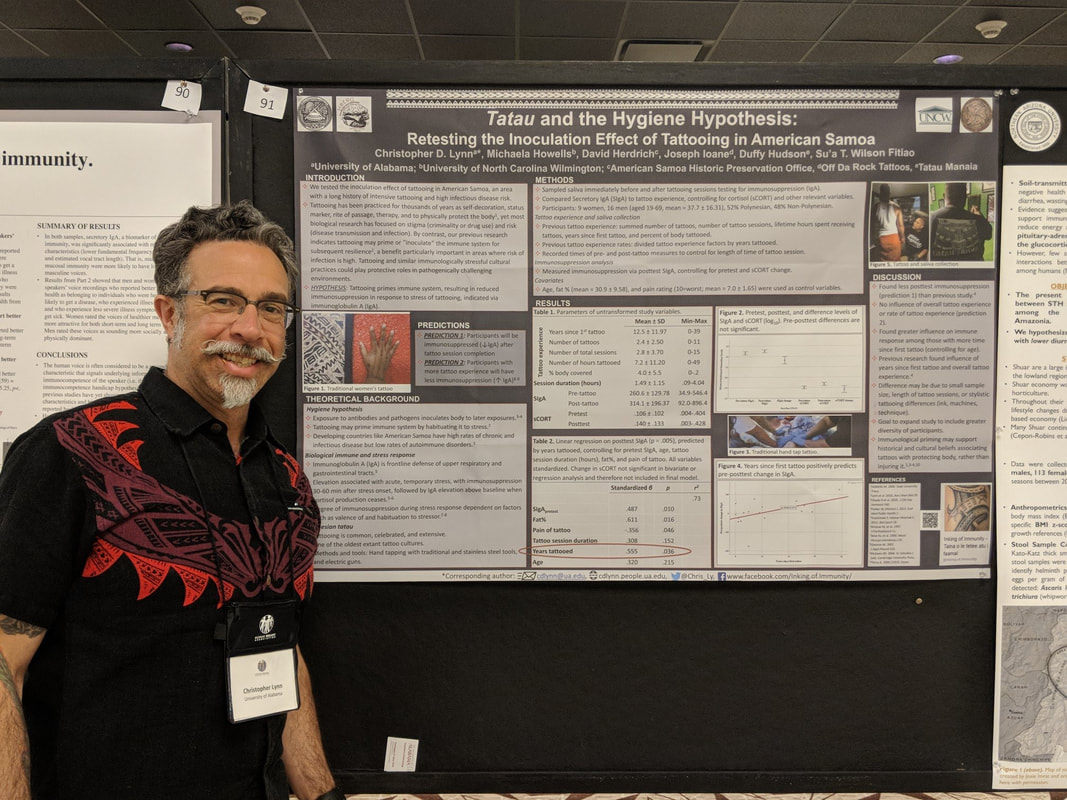

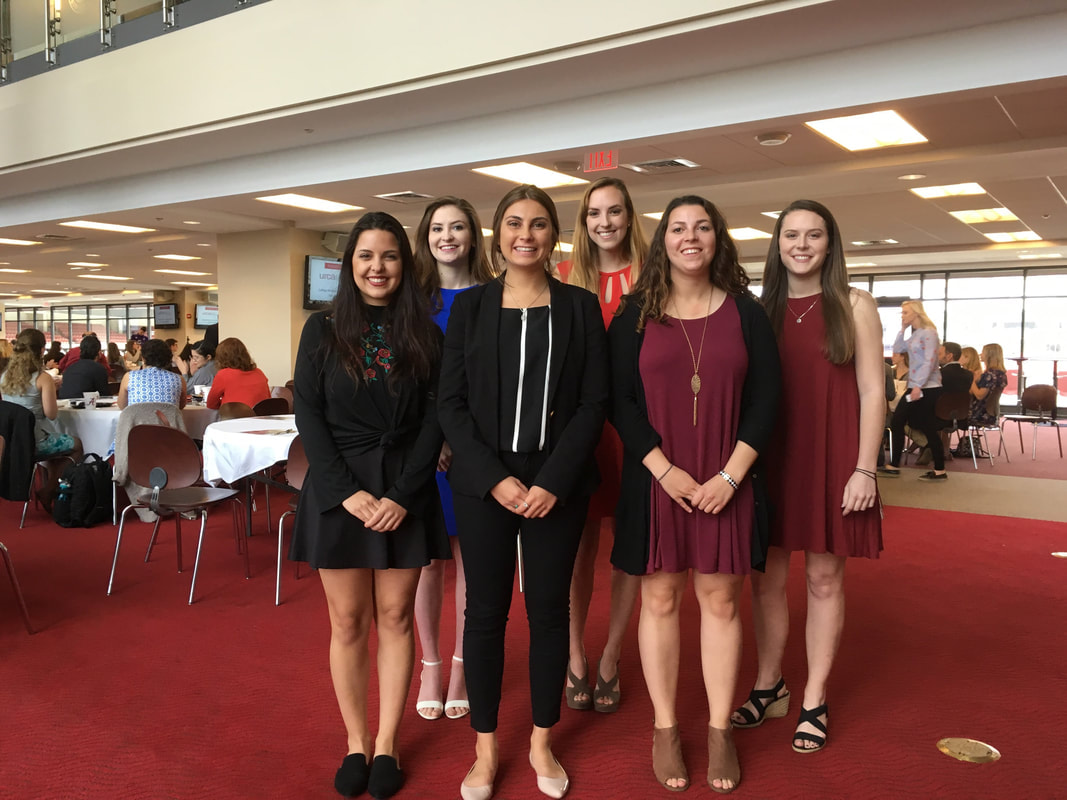
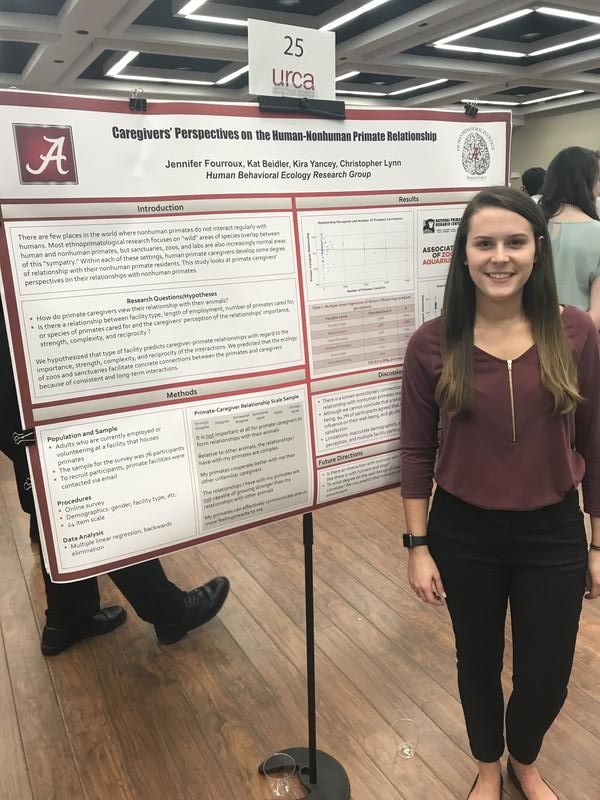
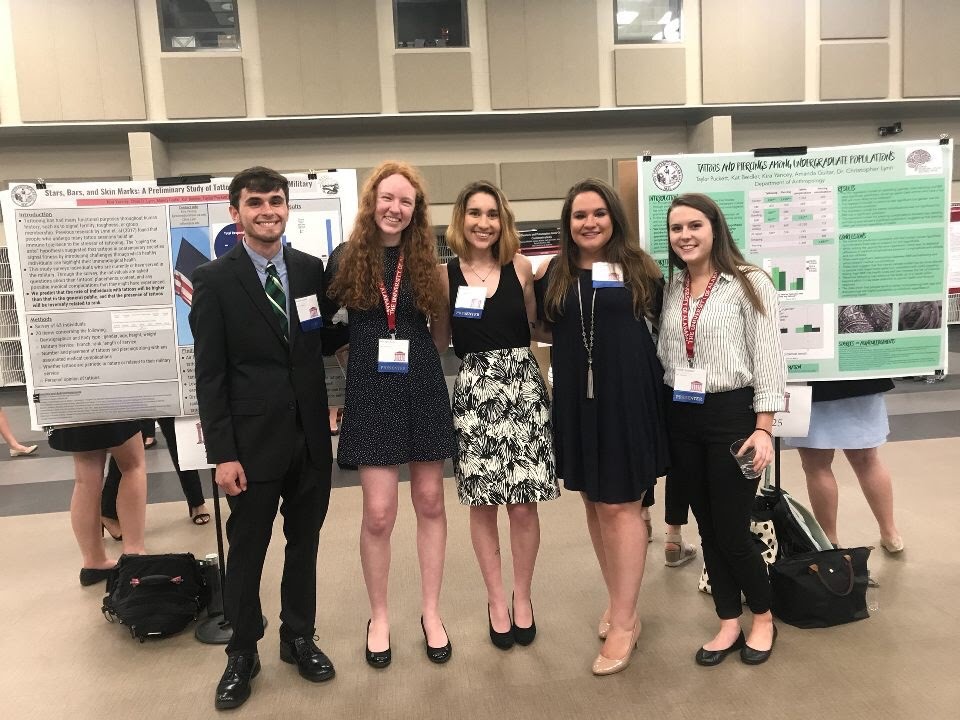

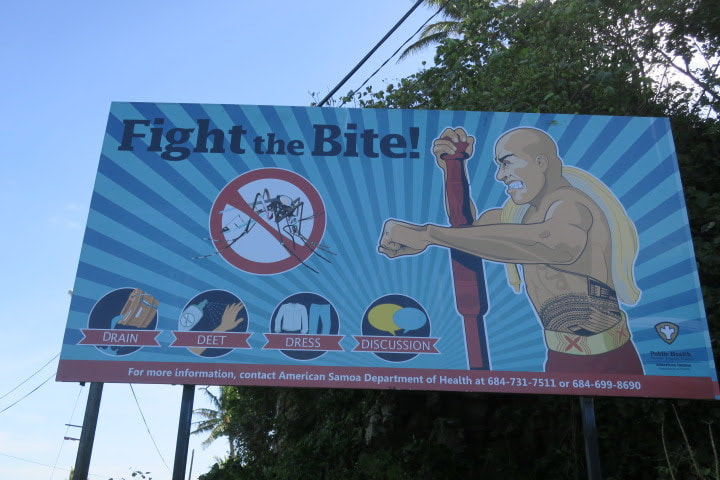
 RSS Feed
RSS Feed
